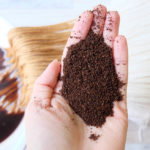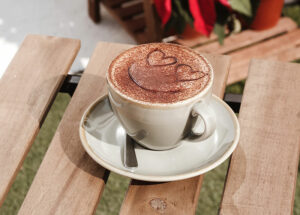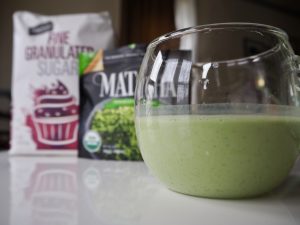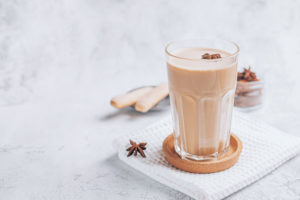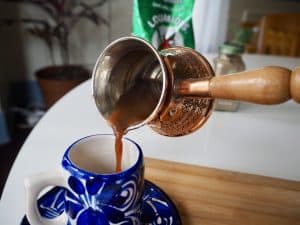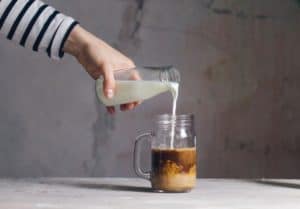
We like coffee a lot, but usually, when we say that, we mean drinking it. As it turns out, coffee has many alternative uses, and one of the more fun ones is as a dye. If you have ever spilled coffee on yourself and stained your clothes, it comes as no surprise that coffee makes an excellent dye. Coffee stains are difficult to remove from fabric, which is annoying when it happens to your tablecloth but can be an asset if you are looking for a creative way to breathe new life into an old garment or curtain.
In this article, we will give you a few ideas for why you might want to dye something with coffee and also give you a step-by-step guide for dyeing fabric with coffee. If you have some old beans lying around, grab them and get ready to use coffee like you never have before.
Why Dye With Coffee?
You might be wondering why you should use coffee to dye something rather than use a dye that is specifically designed for fabric. That is a great question, and the answer is simple: style.
Coffee is one of the best ways to give something an aged, weathered look that fits well with rustic decor and gives an impression of being lived-in. Brown and tan dyes can have a similar effect, but often the result is strangely artificial and uniform, resulting in a look that does not elicit the right feel. Since even filtered coffee has grit and texture, you get a natural unevenness that many people find quite appealing when you dye fabric with it.
Dyeing Fabric With Coffee
Equipment
- A large bowl
- A spoon (preferably wooden)
Materials
- The fabric you want to dye
- Brewed coffee
- Vinegar
Instructions
- Wash the fabric. It is important to start with a clean fabric. Before you dye something, you'll need to soak it anyway, so a good wash accomplishes both simultaneously.
- Brew the coffee. There are no rules here. You can use any coffee you like and any brewing method. One important consideration is the roast level. Dark roasts will produce a darker dye than light roasts, although how long you soak the fabric also determines the final color. We recommend starting with a medium roast and soaking for longer if you want a darker fabric.
- Put the fabric in the bowl. Any bowl will do, but it is preferable to have a large enough bowl to fit whatever you're dyeing with minimal bunching. If your fabric is bunched up during the dyeing process, you'll wind up with an uneven effect resembling tie-dye.
- Pour the coffee over the fabric. Pour hot coffee over the fabric evenly. Use a wooden spoon to stir the coffee so that the fabric soaks evenly. If you don't have a wooden spoon, you can use another material, but try to avoid metal. Metal spoons with sharp edges can damage the fabric.
- Let it soak. Let the fabric sit in the coffee until it reaches the desired color. It can be tricky to decide when to finish the dyeing process if this is your first time. For an average-strength roast, a few minutes will produce a light tan. The longer you leave the fabric in the coffee, the darker the color will become. About 30 minutes is enough to achieve a relatively dark tone, but we have seen some people leave the fabric to soak overnight when they want a deep, rich brown. Unfortunately, only trial and error will help you determine how long to soak to get your desired outcome.
- Soak in vinegar. When your fabric reaches the desired color, remove it from the bowl and wring it out. Fill a bowl with hot water and 1-3 tablespoons of vinegar. Adjust the amount of vinegar to match the size of the fabric. One tablespoon of vinegar is good for small items, but larger fabrics like tablecloths and curtains need four or five. Put the garment in the vinegar solution and let it sit for 10 minutes.
- Let it dry, and iron it. After soaking in the vinegar mixture for about 10 minutes, remove the fabric and let it dry completely. Once the fabric is completely dry, iron it to set the color.
Tips
If you’ve never dyed something with coffee, we recommend doing a trial run before attempting to dye something you care about. Getting the right color can be difficult for first-timers, and with some experience, you are more likely to get a result you’re happy with. A fancy fabric napkin is a great option since it’s small and easy to work with.
The material you’re working with can have a fairly large impact on your results, so make sure to consider that when selecting a test fabric. Choose something that is the same material as the fabric you want to dye so that the results are more representative of what you can expect from dyeing the real fabric.
Some fabrics, like wool, are absorbent and take dye well, while others, like cotton, tend to fade over time. It is a good idea to choose a fabric that takes dye well if you want your results to last.
Conclusion
Dyeing fabric with coffee is a fun weekend project that can take an old, drab item and give it a new lease on life. Unlike traditional dyes, coffee can give fabrics a more natural color, with a pleasant unevenness suggesting authenticity, age, and style. Make sure to practice on an unimportant item before you attempt to dye something for real. A small fabric napkin is a great way to get some practice in before you dye your grandmother’s curtains.
- SEE ALSO: How to Dye Coffee Filters
Featured Image Credit: Christine Stimpson, Shutterstock




